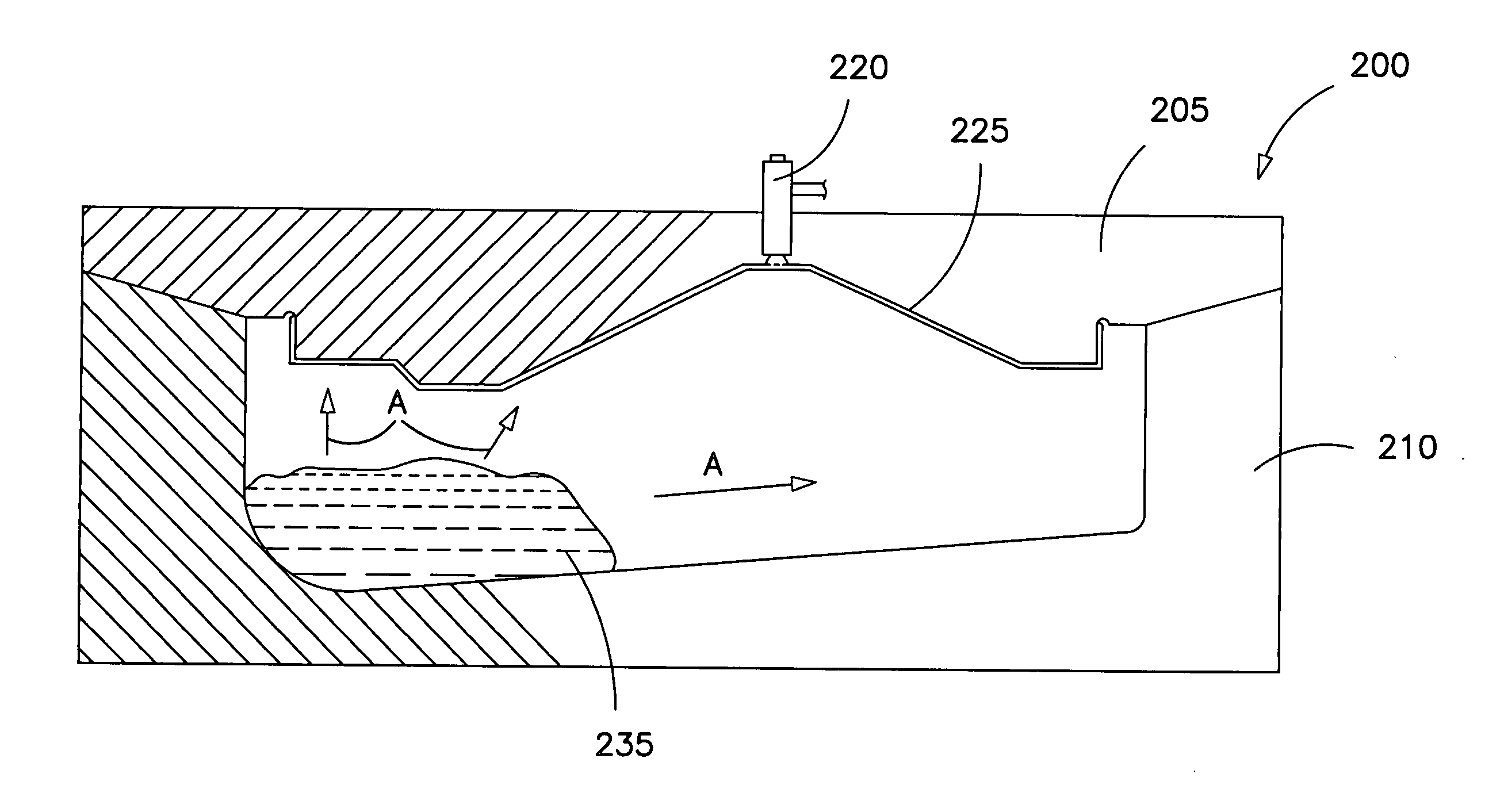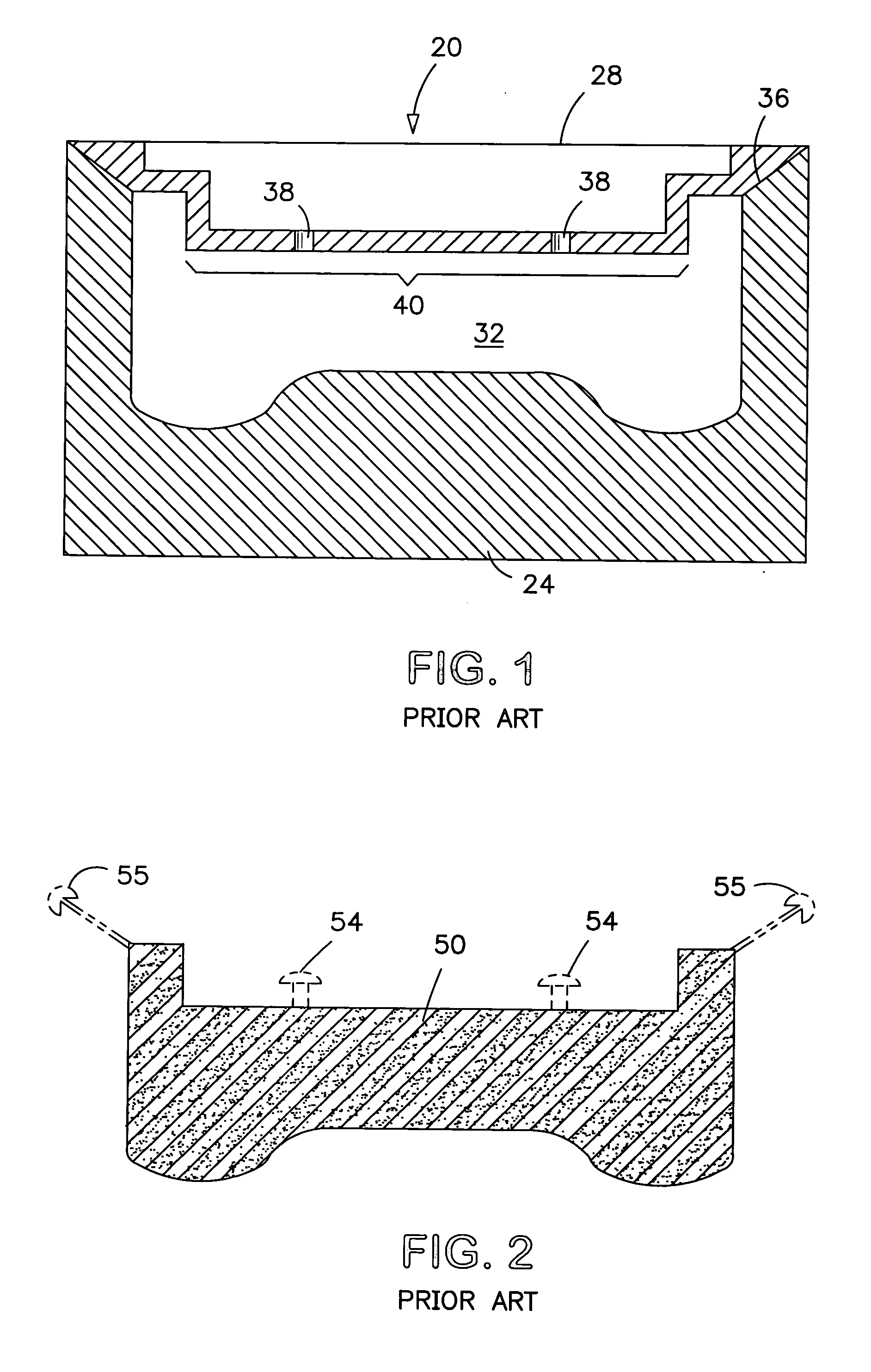Vented mold and method for producing molded article
a technology of vented molds and molded articles, which is applied in the direction of manufacturing tools, food shaping, drawing profiling tools, etc., can solve the problems of defective molded articles, defective molded articles, and waste of liquid foamable polymeric compositions which move into the vents
- Summary
- Abstract
- Description
- Claims
- Application Information
AI Technical Summary
Benefits of technology
Problems solved by technology
Method used
Image
Examples
Embodiment Construction
[0064] The most preferred liquid foamable polymeric composition is based upon polyurethane, which will be referred throughout this specification. However, it will be apparent to those of skill in the art that the present invention is applicable to other types of molding operations including, but not limited to, latex foam, neoprene foam, PVC foams and the like.
[0065] A first generation prior art mold will first be discussed, with reference to FIGS. 1 and 2, and a second generation prior art mold will then be discussed, with reference to FIGS. 3 and 4.
[0066] With reference to FIGS. 1 and 2, a typical clam-shell mold, similar to those used for forming an automotive seat cushion from polyurethane foam, is indicated generally at 20 in FIG. 1. Mold 20 includes a lower mold 24 (also known in the art as a “bowl”) and an upper mold 28 (also known in the art as a “lid”) which are joined by a conventional hinge or other means (not shown). Lower mold 24 and upper mold 28, when closed, define...
PUM
| Property | Measurement | Unit |
|---|---|---|
| width | aaaaa | aaaaa |
| width | aaaaa | aaaaa |
| width | aaaaa | aaaaa |
Abstract
Description
Claims
Application Information
 Login to View More
Login to View More - R&D
- Intellectual Property
- Life Sciences
- Materials
- Tech Scout
- Unparalleled Data Quality
- Higher Quality Content
- 60% Fewer Hallucinations
Browse by: Latest US Patents, China's latest patents, Technical Efficacy Thesaurus, Application Domain, Technology Topic, Popular Technical Reports.
© 2025 PatSnap. All rights reserved.Legal|Privacy policy|Modern Slavery Act Transparency Statement|Sitemap|About US| Contact US: help@patsnap.com



